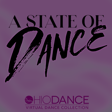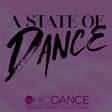
Dancing Solidarity with Al Evangelista
Season Two, Episode Three: This month’s guest is Al Evangelista and we are discussing Filipino/a/x American diaspora, queer identities, and bringing history into the room with technology. Al s a performer, choreographer, and educator. His creative works have been performed at Steppenwolf Theatre Company, American Theatre Company, Links Hall, Schwartz Center for the Performing Arts, and Moss Arts Center. Evangelista’s work focuses on community-engaged practices, queer performance, social justice and Filipina/o/x-American diaspora. He also works in theatre, documentary-based work, and improvisatory collaboration.
Evangelista has danced in works for Dance Exchange, the Chicago Museum of Contemporary Art, Chicago’s Department of Cultural Affairs and Special Events, the Inconvenience, and performed at Chicago Opera Theatre, Adventure Stage Chicago, among others.
He is an affiliate faculty member of Oberlin's Department of Gender, Sexuality, and Feminist Studies and a faculty fellow in the Center for Communicating Science at Virginia Tech. alevangelista.com
Dancing Lab Developed by Al Evangelista is a Part of the National Center of Choreography at the University of Akron August 23, 2023
Al Evangelista is one of three dance artists whose work is being supported in 2023 through a grant from the National Endowment for the Arts to the National Center for Choreography at the University of Akron. Evangelista's project, developed in partnership with Daring Dances (Ann Arbor, MI), is part of NCCAkron's Dancing Labs residency program.
OhioDance A State of Dance is a six-part series coming out the fourth Friday of each month through November 2023.
This podcast is driven by the OhioDance mission to secure the foothold of dance in Ohio through increasing visibility, firming viability, and elevating the position of dance in Ohio.
In 2016, a five-person team set out on a mission to capture the achievements of persons and institutions who have shaped the intricate diversity of dance history and practice within the state of Ohio and weave them together in an easily accessible digital format. This we call the OhioDance Virtual Dance Collection. As of 2024 we have highlighted 37 individuals and institutions. The team has traveled over 5000 miles and interviewed hundreds of individuals in all five regions of Ohio. vdc.ohiodance.org
If you like what you are listening to and are not a member of OhioDance, you can go to ohiodance.org and click the membership button to join and receive the many benefits that come with your membership. You can also donate through our purple donate button.




